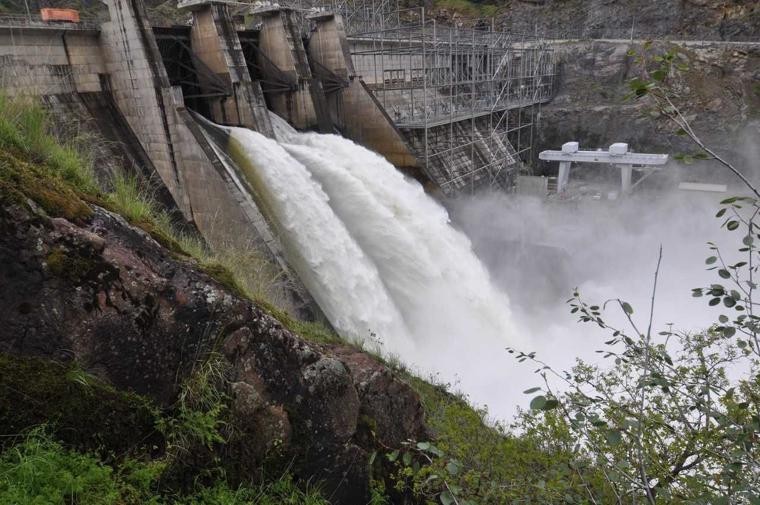Leaders in Idaho and Oregon have reportedly settled an endangered species dispute with major financial ramifications for both Idaho Power rates payers and Idaho irrigators.
The Oregon Department of Environmental Quality had proposed reintroducing endangered steelhead trout and salmon into Pine Creek, which originates in Oregon but flows into Hells Canyon Reservoir in Idaho, as a condition of re-licensing Idaho Power Co.’s Brownlee, Oxbow and Hells Canyon dams.
Idaho leaders vociferously opposed Oregon’s plan, concerned that regulations governing a re-introduced endangered species would substantially increase the cost of producing power and irrigating crops.
The dams, which are located on the Snake River near the Idaho and Oregon border, were built from the mid-1950s through 1967 and have blocked a historic spawning route for steelhead and Chinook salmon originating from the ocean.
Oregon’s draft Clean Water Act certification to re-license the operation would have required Idaho Power to trap the endangered anadromous fish upstream of the dam and release them downstream, enabling them to reach the Pacific Ocean to complete a stage of their life cycle.
Terms of the recent settlement, announced Friday, would allow stocking of Pine Creek only with hatchery-raised spring Chinook salmon and steelhead, resulting in no new Endangered Species Act requirements in Idaho. Idaho Power has agreed to spend $20 million throughout the next 20 years to research obstacles that may hinder the ability of the hatchery-raised fish to establish a self-sustaining population using Pine Creek.
The settlement doesn’t call for the reintroduction of any endangered fish during the 20-year research period. The states will reconsider the issue based on the study findings upon completion of the research, which will be done by Idaho Power scientists in conjunction with the DEQs of both states.
The settlement funds would also help Idaho Power increase salmon production at its Rapid Creek hatchery by 800,000 fish and support water-quality improvements, working in partnership with willing landowners within the Malheur and Owyhee river drainages, which flow into Brownlee Resrevoir.
“I can say unequivocally that it’s great to have that issue behind us,” said Idaho House Speaker Scott Bedke, R-Twin Falls. “It gives us stability for a major part of our economy going forward. Water and its use are the lifeblood of the state of Idaho, particularly in Southern Idaho, and our economy is built around the Snake River and our ability to use that.”
Oregon DEQ officials are also pleased by the settlement. Oregon DEQ spokesman Donnie Oliveira said language in the settlement calls for roughly 100 miles of habitat improvements to reaches of more than 20 rivers and creeks in Idaho and Oregon.
“We think this is going to advance a long-overdue certification process for the complex, and we think this will result in significant water-quality improvements for Oregon,” Oliveira said.
The three dams produce about 70 percent of Idaho Power’s hydro-electricity. The company has operated the dams on annual licenses ever since 2005, when the original federal license to operate the dams expired.
Brett Dumas, director of environmental affairs with Idaho Power, said the investments required under the settlement won’t be made until the dams have been issued a new license by the Federal Energy Regulatory Commission. He expects the new license to be issued by no earlier than 2022.
Both state DEQs should issue final certifications by June 2019, after reviewing feedback from the public. FERC will re-evaluate a final environmental impact statement it issued in 2007 for the dam license. Endangered Species Act evaluations and biological opinions must also be submitted by the U.S. Fish and Wildlife Service, governing bull trout, and NOAA Fisheries, regarding steelhead and salmon.
Dumas said there are already hatchery steelhead and salmon in the Snake River upstream of Hells Canyon Dam, but researchers haven’t studied the ability of the fish to survive and reproduce in current conditions.



